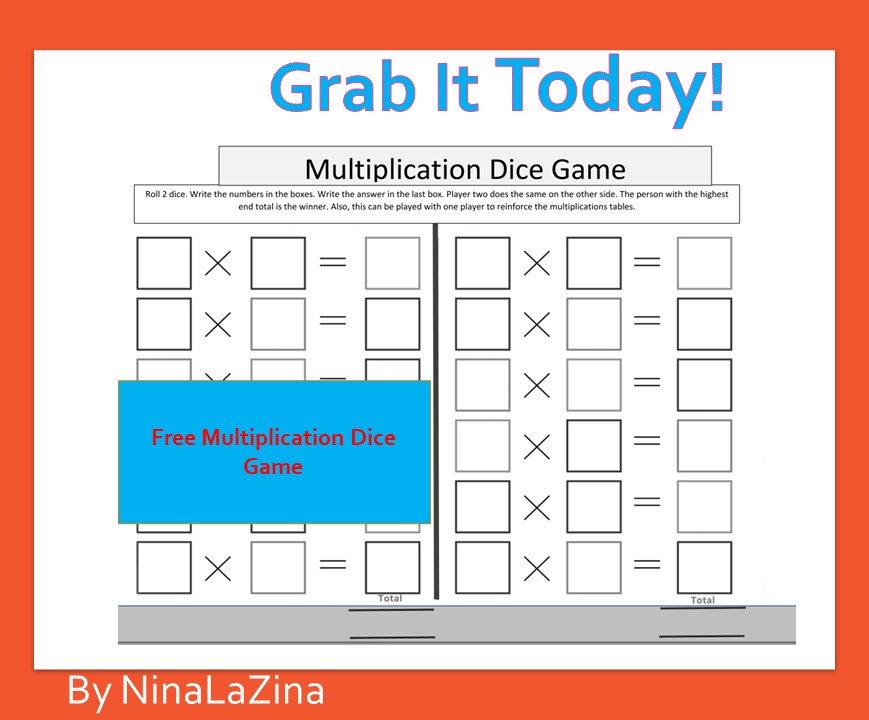Teaching multiplication strategies to help your child understand and remember the multiplication tables. Understanding and memorizing the multiplication facts ensures that children can work out maths problems. They can then quickly answer questions, both in their head and on paper. Children will also be more confident when endeavouring to learn other aspects of maths that are often connected to the multiplication table. It is important to take your time and teach appropriate times tables for each school year. This will help children with the new multiplication check test that children have to sit in year 4 in the UK.
Year 2 (grade 1) should know the 2, 5 and 10 times tables
Year 2 times tables expectations
Children should also be learning division facts alongside the times tables. Children should be able to divide and understand inverse of these numbers. They also need to know the division facts for these times tables, for example if 2 x 10 = 20, then 20 / 2 = 10 . These are good multiplication strategies to help your child.
Year 3 (grade 2) should know the – 3, 4, 6, 7, 8 and 9 times tables
Year 3 times tables expectations
With lots of times tables to learn in year 3, learning them in a specific order can really help. The teaching multiplication strategies and tricks of learning them in a particular order is important. The 4 times table is a great place to begin with multiplication to help your child. Children will have knowledge of the two times tables which will help them.
Year 4 (grade 3) should know all the tables including now the 11 and 12 multiplication times tables
Year 4 times tables expectations
Although tables over 10 may seem daunting – do not fear! Start with the 11 times table and then move on to the 12 times table.
Year 5 and 6 (grade 5)
Year 5 and 6 times tables expectations
By year 5 and 6 children should know all the multiplication tables as they would have encountered numerous teaching multiplication strategies.
To Conclude
Teaching multiplication strategies that teach specific multiplication tables depending on which school year a child is in can be very useful. This helps children to apply the knowledge they have gained and use various techniques to answer multiplication questions. By practising all the times tables they have learned in the order above, children can keep their knowledge fresh and develop their instant recall.


[…] I was not given he opportunity at school to have various ways to learn the multiplication tables. Thus, this is my contribution to society as I want children to have activities and […]
LikeLike
[…] I developed my multiplication board games as I remember when I was younger just having to chant songs. There was not a range of times table games to select from and I think that is incredibly sad. Furthermore, learning the times tables should be accessible to all children and utilize all learning styles. Children learn in different ways. Some children may love doing times tables drill sheets as they find it competitive to pit themselves against a clock, other may like to listen to times tables songs and others may like to play a multiplication tables game. Most children will lie a variety of all of those as it would get quite boring doing the same thing every day. Consequently, it can take a while to learn, memorize and understand the times tables and so it is important that children are given a wide range of activities to do so. Read here which times tables your child should know and when. […]
LikeLike
[…] facts for 3, 4, 6 , 7and 8, 9 multiplication including 12 x 12. You can check out the which times tables your child should know for each age group here. Your child would be required to take a multiplication test in year four. Read about the test […]
LikeLike
[…] Find out which tables tables your child should know and at what age they should know them. […]
LikeLike
[…] Find out which times tables your child should know and when. […]
LikeLike
[…] Find out which tables tables your child should know and at what age they should know them. […]
LikeLike
[…] hundred and twenty one number facts that make up the multiplication tables 2 to 12 with particular emphasis on the 6, 7-, 8-, 9- and 12-times table. Each multiplication question will only appear once in any 25-question series. Children will not […]
LikeLike
[…] Read which multiplication tables should children know here. […]
LikeLike
[…] Which times tables should children know? […]
LikeLike
[…] Arrays should be used in conjunction with learning the multiplication tables. They are a way to allow children to understand the multiplication tables. Additionally, for those children who struggle to understand the multiplication tables this is an easy and quick way to allow them to physically see what is going on with objects or items. It is a good idea to introduce the concept in year 2 grade 1 as this is when they will begin to learn the times tables. […]
LikeLike
[…] benefits at the end of it. Go slowly. Try 15 minutes five days. Or 20 minutes five days a week. Find out which multiplications tables they should know and stick with that. […]
LikeLike
[…] Read here which times tables children should know and at what age […]
LikeLike
[…] Which times tables should children know? […]
LikeLike